ENO may not always have matched the Royal Opera in the Great Puccini Voices stakes. But it's served up many of the classiest Mimìs, with Valerie Masterson, Mary Plazas and Elizabeth Llewellyn as top seamstresses. Californian former beauty queen Angel Blue, an acclaimed Musetta in the previous revival, now joins them. Unlike Llewellyn, still awaiting the international recognition she deserves, Blue is also among the favoured roster of young sopranos who, after an interregnum where we wondered where all the best black opera singers had gone - whether the spell of Leontyne Price and Jessye Norman on a younger generation had faded - are now firmly in the limelight. Like South Africans Pretty Yende and Pumeza Matshikiza, she lives up to the hype.
Does this second revival of Jonathan Miller’s production by Natascha Metherell live up to Blue, though? Musically, yes. There’s just as much to celebrate in the hyper-poetic Rodolfo of Somerset-born David Butt Philip, a lyric-dramatic tenor recently graduated from the Royal Opera’s Jette Parker Young Artists Programme who’s already made his mark in the role on the Glyndebourne tour as well as in a cameo role in Die Frau ohne Schatten. These two lovers are young, personable and technically flawless. You think at first hearing that Butt Philip’s seemingly lightish lyric might have trouble opening out up top, but not a bit of it; he and Blue absolutely dominate the ensembles of the brilliant Café Momus scene. He also uses breath control to produce some phrases that seem to go on for ever; I’ve never heard the duet of regret at lost love in the last act more lustrously launched.
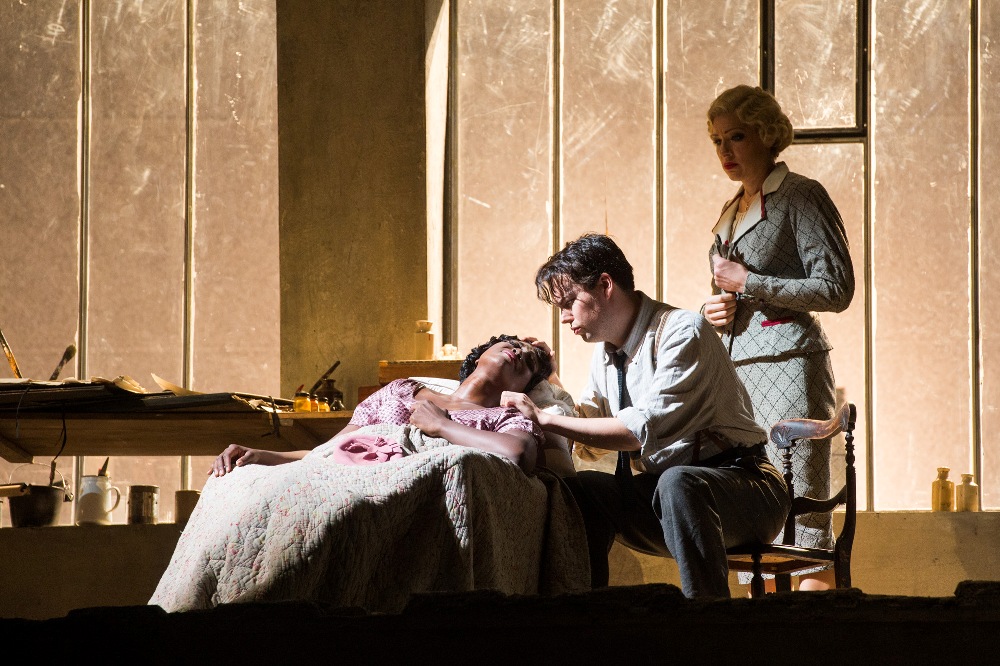 Similarly, there’s a question-mark whether Blue’s distinctive vibrato might get in the way of the long lines, but she negotiates them in true Italianate style, a rose in full bloom as the translation at one point describes Mimì. I’d like a little more scaling-down, some perfect pianissimi, though she does finally achieve them in a death scene of moving restraint (pictured above with Butt Philip and Jennifer Holloway's Musetta).
Similarly, there’s a question-mark whether Blue’s distinctive vibrato might get in the way of the long lines, but she negotiates them in true Italianate style, a rose in full bloom as the translation at one point describes Mimì. I’d like a little more scaling-down, some perfect pianissimi, though she does finally achieve them in a death scene of moving restraint (pictured above with Butt Philip and Jennifer Holloway's Musetta).
But oh, how much more touching and real these young lovers would be if the production gave them more to work on. It’s a typical Miller offering, all window-dressing and no fine detail; the early 1930s setting adds nothing but stiff women’s hair-dos and a lazy nod at Brassai – what, sex on sale on a February dawn? The return to trad laziness after the late, often inspired Steven Pimlott’s ENO staging which preceded it is especially disappointing. Fine, the singers must have been told less is more: Blue never overdoes the coughing, for instance. But like Amanda Holden’s unusually infelicitous translation, the staging replaces nuance with generalization. It’s a failure, for instance, not to have Rodolfo fleck the fainting Mimì’s face with the drops of water we hear in the orchestral pizzicati, or at least to replace it with an equivalent; nothing is happening here. And focused physical energy is needed for all the entrances in Acts One and Two to match the music’s vigour; on stage, the subdued arrivals are so inert.
Even so, we get some personality from the other Bohemians. George von Bergen needs more exuberance and a tighter vocal control, but we know his Marcello is a good sort; George Humphreys relates Schaunard’s tale of trying to kill a troublesome parrot by ceaseless fiddling charmingly, with vivid diction and likeable presence; and Barnaby Rea, though he doesn’t sound like a real bass to me, delivers Colline’s arietta about selling his beloved overcoat with real subtlety and sweetness. The singer most in need of directorial loosening-up is Jennifer Holloway’s Musetta, all sharp angles when she should be wrapping herself round old lover Marcello (strange, too, to cast a mezzo as a character who vocally sometimes rises above Mimì’s line, though the top notes aren't at all bad).
 Gianluca Marcianò is in total command of the score, achieving the rare distinction of making the ENO Orchestra sound Italianate towards the lyric climaxes. His view of the score isn’t exactly mine; I’d like more continuity, less lingering, in Puccini’s fluid perfectionism. But it’s a fine piece of work. I suspect he must have cursed the ineptitude of the first and fourth act “curtains”; it’s an elementary mistake to have the sceneshifters in 1930s workers’ garb come on to swivel the garret into café scenery before the last bars of moonshine have faded at the end of Rodolfo’s and Mimì’s duet, and for heaven’s sake don’t begin to bring down a curtain before the final despair has subsided. Handsome and malleable as Isabella Bywater's Paris streetset undoubtedly is (end of Act Three pictured above), it's also a cop-out to see who's coming up the stairs to the garret; Musetta's breathless announcement that the dying Mimi has come back, powerfully timed by Puccini, for instance, is defused.
Gianluca Marcianò is in total command of the score, achieving the rare distinction of making the ENO Orchestra sound Italianate towards the lyric climaxes. His view of the score isn’t exactly mine; I’d like more continuity, less lingering, in Puccini’s fluid perfectionism. But it’s a fine piece of work. I suspect he must have cursed the ineptitude of the first and fourth act “curtains”; it’s an elementary mistake to have the sceneshifters in 1930s workers’ garb come on to swivel the garret into café scenery before the last bars of moonshine have faded at the end of Rodolfo’s and Mimì’s duet, and for heaven’s sake don’t begin to bring down a curtain before the final despair has subsided. Handsome and malleable as Isabella Bywater's Paris streetset undoubtedly is (end of Act Three pictured above), it's also a cop-out to see who's coming up the stairs to the garret; Musetta's breathless announcement that the dying Mimi has come back, powerfully timed by Puccini, for instance, is defused.
This revival has some truly great singing, but it could have delivered the full package with encouragement of top-notch singing-acting too.Compared to Richard Jones's concurrent ENO production of Puccini's The Girl of the Golden West, it's a dramatic dud saved only by the intelligence of its fine cast. Good news, though, that Jones will be in charge of the Royal Opera Bohème to replace John Copley's ancient production, even fustier than Miller's: now that should be a whole different story.

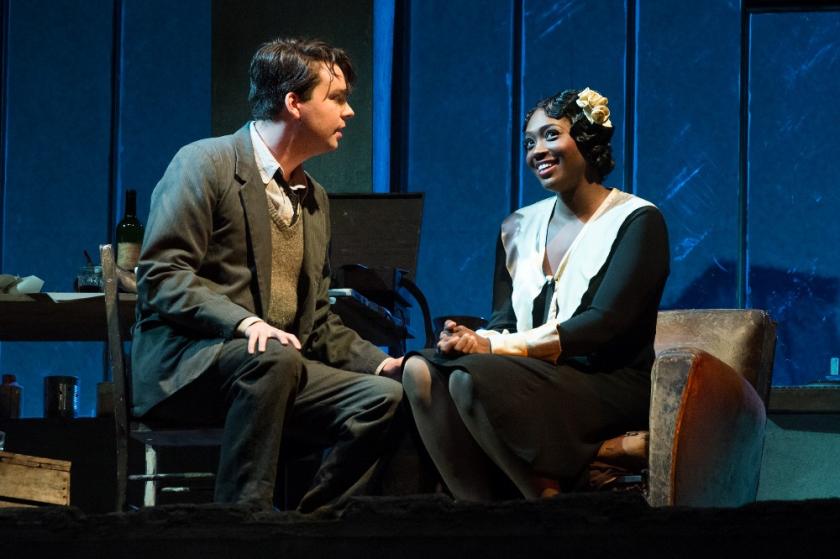

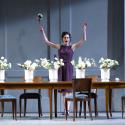
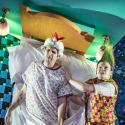

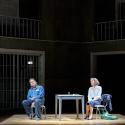


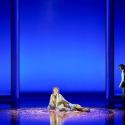


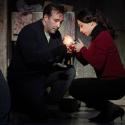
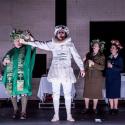
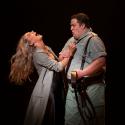
Add comment